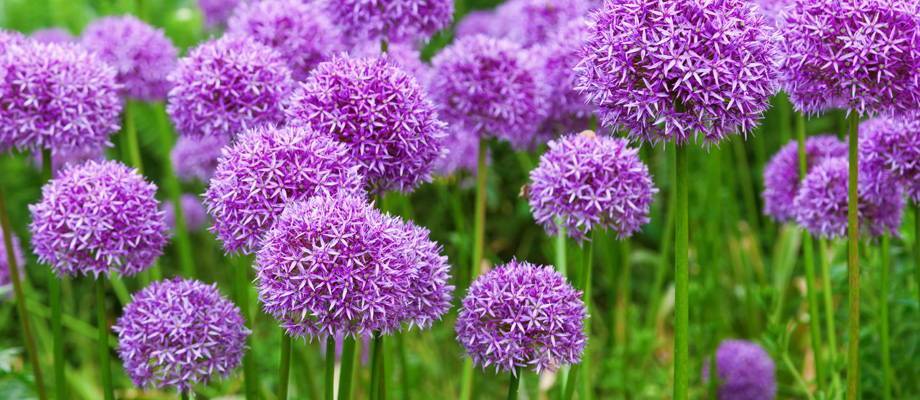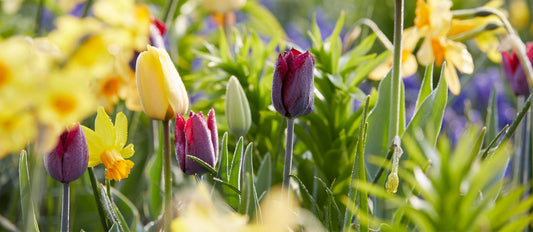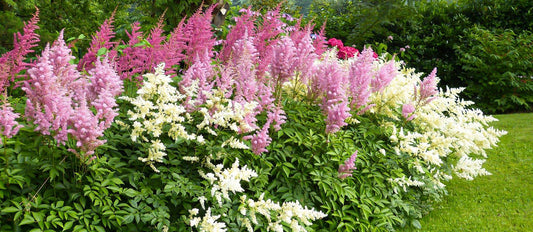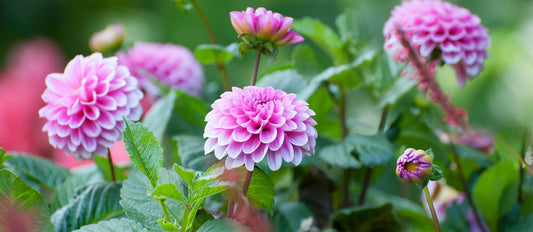Alliums can be planted again in the autumn. There are up to 700 varieties of alliums so you have plenty of choice for in the garden. They are all perennial bulbs, so they bloom several years in succession. Enjoy these ornate flowers for several years from spring to late summer. Besides being beautiful, they are also a good for nature. Butterflies and bees love the nectar of alliums. So there's no reason not to plant alliums in the garden! Here are some tips for planting the bulbs in the autumn and keeping them as beautiful as possible in the spring.
Planting Alliums
Autumn is the best time to plant allium bulbs. In nature, the allium grows in warm, dry places. You can even find them on mountainsides. In the garden they thrive best in a dry, sunny place. The soil must be sufficiently well-draining for the allium not to get wet roots. Mix gravel into the soil if the drainage is inadequate. Alliums also stand out between perennials or shrubs. If you plant them in a large grouping, you will be astounded by the blanket of flowers in the spring! But be sure that the bulbs and plants are spaced correctly. This is always listed on the plant label.
Plant the flower bulbs a little later in the autumn, between October and December. The soil has cooled off a bit by then. Plant them too early and they may emerge in the winter and die due to cold temperatures. Do plant alliums before the first frost, otherwise the bulbs may freeze when put in the soil. When planting, dig a hole with a depth of about twice the height of the bulb. This is about 7 to 15 cm. When planting smaller bulbs, one large hole is an option. Larger bulbs each need their own hole. Otherwise, the bulbs can damage each other during growth. Place the bulb in the hole with its tapered end up. Fill the holes with fresh potting soil for flower bulbs. During dry spells, water more regularly. In freezing temperatures, cover the alliums well and bring flower pots inside if necessary. In March or April you can already see the first shoots, after which the flower usually blossoms in late April or early May.
Allium Care
Alliums are very easy to care for. They extract their food from the bulb and they don't need much extra water. Give them an occasional splash of water during extended dry spells. Alliums do like soil with a lot of lime. If your soil does not contain much lime, it's a good idea to increase the lime content. For example, spread bone meal on the ground over your alliums in the autumn. In the spring you can spread organic fertiliser on borders, open ground or pots. The will strengthen the flowers and is also good for the other plants.
Perennial Flowers
Alliums are flower bulbs with the features of annuals, because they bloom for multiple years. For alliums to come back strong the next year you need to take good care of them. The leaves are crucial in this respect. Fertilise them in the spring. The best time is when the leaves start to emerge. Alliums extract their food from their leaves after flowering in order to strengthen the bulb for the next year. You can also add organic fertiliser after flowering. Do not clip the brown leaves until the allium is done blooming. Then the bulb has already absorbed all the food. Protect the bulbs in winter so they do not freeze and break.
You can also opt for digging up the bulbs. Remove them from the ground after flowering and store them in a dry, warm place (around 25 degrees). The bulbs can then be planted again in autumn. Choose a new place. If returned to the same spot, the risk of disease and pests is greater.
Tip: Mix the 'old' bulbs with a few new allium bulbs each year to enhance their beauty. The older the bulbs are, the less they bloom.
Gorgeous cut flowers
Alliums are perfect flowers for cutting and putting in a vase. Alliums that are done flowering are still decorative, so it's not necessary to cut them back once they finish blooming. The fact that alliums are ornamental onions and smell like them does not have to be a reason not to put them in a vase. Prevent them from smelling like onion by dunking them in cold water. Tall alliums can also be dried very well. Use them in a gorgeous bouquet of dried flowers.




